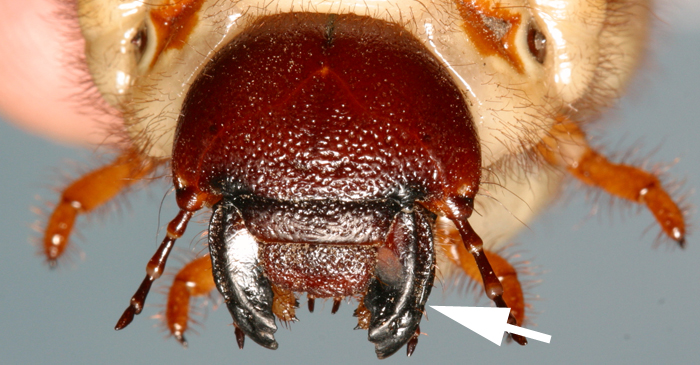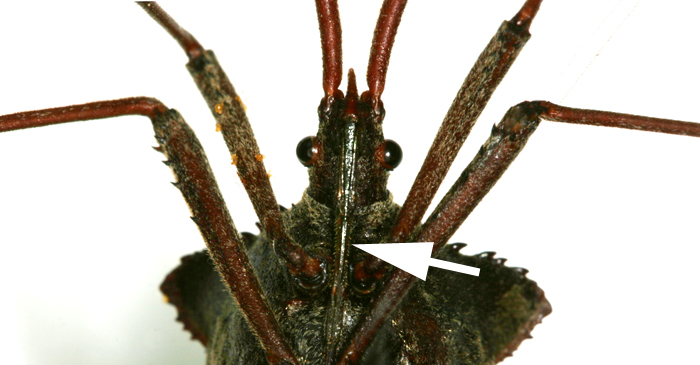Insect mouthparts come in different forms. The two most common forms are the chewing and piercing-sucking types (moth and butterflies have a different, unique form of mouthparts). To determine what type of mouth an insect has, get a good hand lens (10 to 15x) or a small microscope and a bright light. Look closely at the head of the insect. Two pairs of scissors-like jaws with a flap-like structure (labium) in front and one underneath (labium) indicates chewing mouthparts. If you don’t see these structures, flip the insect over and look from underneath. If you can’t see jaws, but see a keel, or ridge, running from the top to the bottom of the head (sometimes extending between the legs), the insect probably has piercing-sucking mouthparts.
Why is this important? Knowing the type of mouthparts is important to entomologists because mouth design provides a clue to the ancestry or taxonomy of the insect. We use mouthparts as a clue, for example, to know which basic insect group (Order) an insect belongs to. Major insect groups that have chewing mouthparts include the cockroaches and grasshoppers, most wasps, beetles, termites and caterpillars. Insects with piercing-sucking mouthparts include some flies (think mosquitoes), fleas, true bugs and their relatives.
Another time it is useful to know something about insect mouthparts is when trying to diagnose plant damage. If an insect is feeding on a plant, different mouthparts are going to cause different damage symptoms. For example, if you catch an insect on your chewed-up tomato plant, and it has piercing-sucking mouthparts, you can eliminate that insect as a culprit.
Interestingly, scientists who study the structures of insect mouthparts long ago determined that the same parts are present in both sets of mouthparts. The scissors-like jaw parts in the beetle are present, though greatly modified, in the mouth of a mosquito. The first and second pairs of jaws of a mosquito, for example, are greatly elongated and fit together in such a way that they create channels for saliva to pass down from, and blood to pass up into, the mosquito’s mouth.


